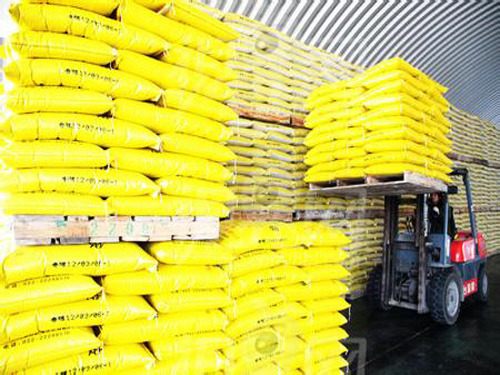Fertilizer "weaning", the time has come?

As markets continue to evolve, the long-standing preferential policies that once supported the fertilizer industry are now coming under scrutiny. Recently, government authorities have released a draft proposal aiming to reintroduce value-added tax (VAT) on fertilizers—marking a potential turning point for an industry that has long relied on subsidies and tax exemptions. Is this the right moment to phase out these benefits? Let’s take a closer look at what this shift could mean for both the industry and agriculture.
The Last Step in Reform
For nearly a decade, the push toward marketization in the fertilizer sector has been ongoing. The reintroduction of VAT is seen as the final hurdle in this transformation. Once implemented, it would signal a complete departure from the previous support system. In 2005, the National Development and Reform Commission set a goal to eliminate price controls and preferential policies, shifting the burden directly to farmers. Today, chemical fertilizer prices are fully market-driven, and comprehensive agricultural subsidies have been rolled out. These goals have largely been achieved.
While some preferential measures have gradually been phased out—such as rising tariffs and the alignment of natural gas prices with market rates—it's clear that the return of VAT is not just a possibility, but a necessity. This move is expected to promote a more sustainable and competitive market environment for the industry.
Reintroducing VAT and eliminating subsidies are essential steps in building a healthier market mechanism. While there may be short-term challenges, the long-term benefits include fair competition, the elimination of outdated production, and improved efficiency across the industry. Companies will no longer rely on government support but will instead be driven by market forces to innovate and operate more effectively.
It's important to note that the original rationale behind these preferential policies was to ease the financial burden on farmers and ensure a stable supply of fertilizers. Currently, the industry faces overcapacity and supply-demand imbalances. However, the timing for reform appears favorable—market adjustments are already underway, and the policy changes are unlikely to disrupt the domestic supply or cause significant price fluctuations.
That said, reform is a complex process. Alongside the removal of subsidies, supportive measures must also be in place. For example, lifting export restrictions could help companies better manage their operations. Additionally, increasing direct subsidies to farmers and using collected VAT to support them could maintain the balance between industry and agriculture.
The Risks of Hasty Changes
While the focus of policy reforms often centers on the fertilizer industry itself, its impact extends far beyond. Fertilizers are a critical input for agriculture, and their support has historically played a key role in attracting investment and driving growth in the sector. Without such support, the development of the fertilizer industry—and by extension, agriculture—could face serious challenges.
Some suggest returning the VAT to farmers, but implementing such a plan is complicated. With China's vast and fragmented farming community, the administrative costs are high, and the effectiveness of such a system remains uncertain. Farmers may not see the intended benefits, raising questions about the feasibility of this approach.
Moreover, if the only goal of removing subsidies is to promote marketization, it’s worth noting that the fertilizer market is already highly competitive. Whether VAT is reintroduced or not may not significantly alter the industry’s trajectory. What matters more is creating a transparent and fair regulatory environment—one that encourages innovation and discourages fraud.
Despite the flaws in current preferential policies, including unfairness to other industries and impacts on local revenues, the current context makes continued support for the fertilizer sector still relevant. Given that agriculture remains a national priority, maintaining a balanced approach is crucial. The goal should be to transition smoothly, ensuring that neither the industry nor farmers suffer undue hardship in the process.
The Noso LED driver is an electronic device that provides power and control to LED lighting systems.including road light led driver, high power lighting,industral light,our company intrdouce led street light driver.It is designed to efficiently regulate the current and voltage supplied to the LEDs, ensuring optimal performance and longevity. The driver is compact and easy to install, and can be used in a variety of applications such as commercial lighting, outdoor lighting, and residential lighting. It is equipped with advanced features such as dimming capabilities, thermal protection, and overvoltage protection, making it a reliable and versatile solution for LED lighting needs.
led driver ,led street light driver
moso power supplies are built to withstand harsh environmental conditions and are highly reliable, ensuring uninterrupted operation even in demanding applications. They are also designed to meet international safety and quality standards, providing peace of mind to customers.
In addition to their excellent product quality, moso also offers exceptional customer support and technical assistance. Their team of experts is available to assist with product selection, installation, and troubleshooting, ensuring a seamless experience for customers.
Overall, moso power supplies are known for their exceptional quality, reliability, and performance. They are trusted by professionals in various industries and are a preferred choice for those seeking high-quality power solutions.
Moso LED Driver,moso constant current ,road lghting driver,moso led power supply,street road light led driver
Yangzhou M.T. New Energy & Lighting Group Co., Ltd. , https://www.mtstreetlight.com